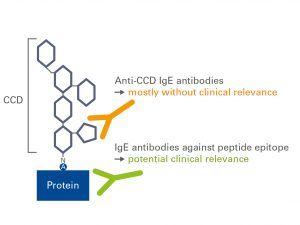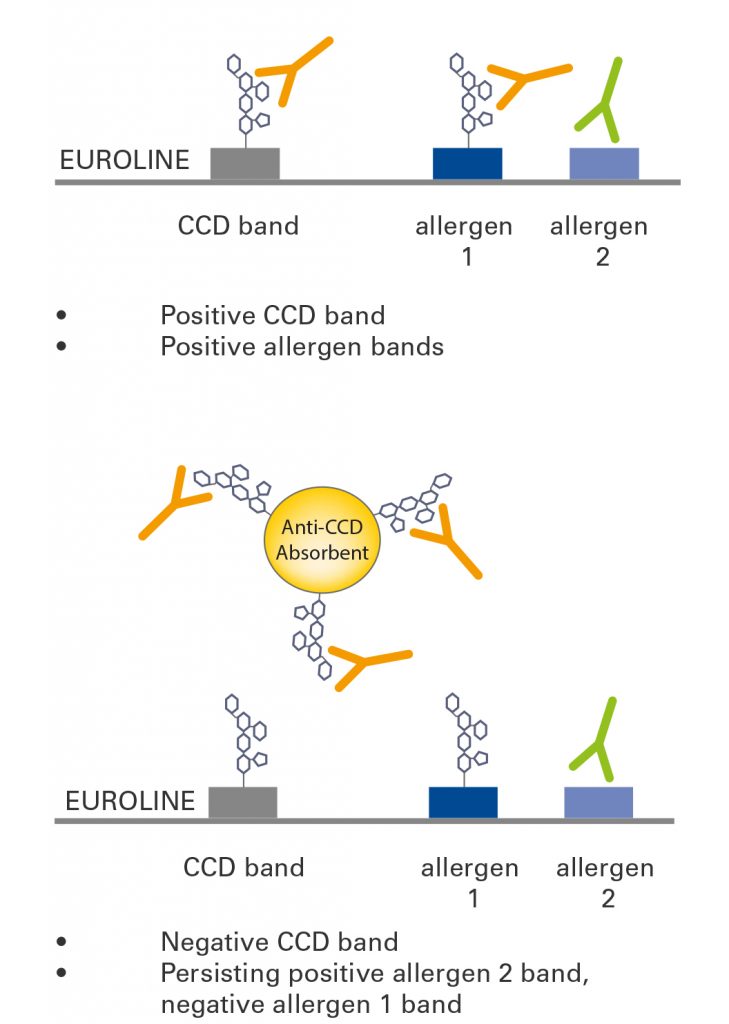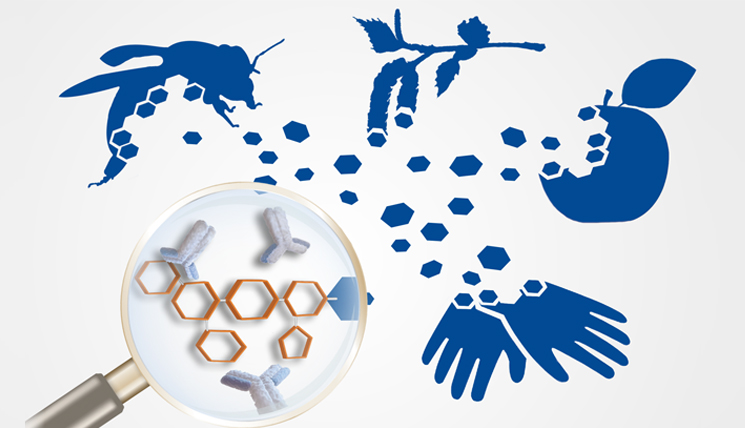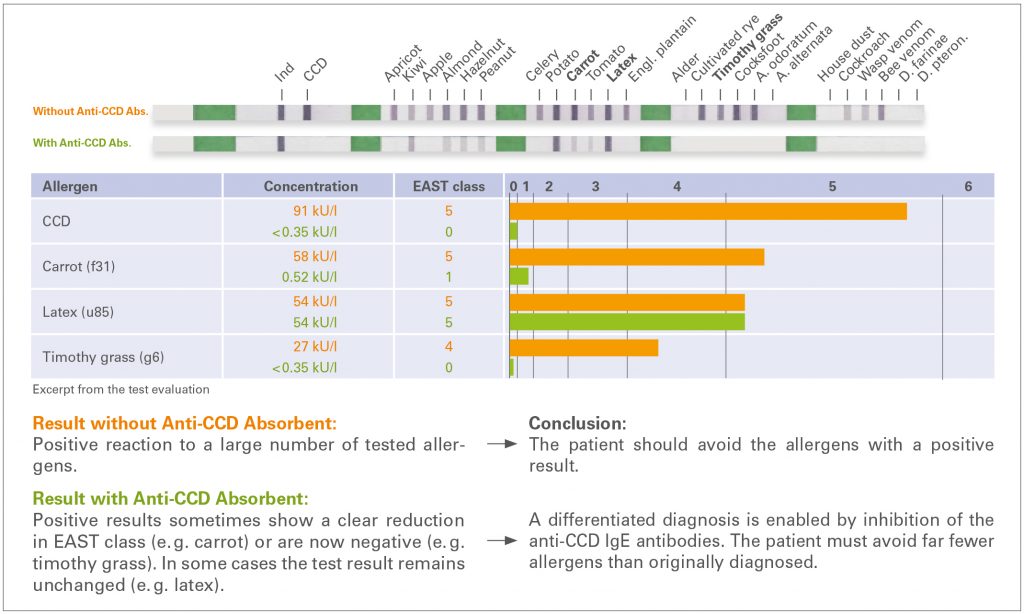In persons with type I allergies, the immune system forms IgE antibodies at first contact with a usually harmless substance (allergen) from the environment, e.g. against certain proteins in pollen, animal hair or food. At every further contact, the binding between the antibodies and the allergen can cause diverse immune reactions, including swelling of mucous membranes, itching of eyes and ears, sneezing spells, wheals on the skin, or breathlessness. In the worst case, the allergic person can suffer a life-threatening anaphylactic shock. For the patient, it is important to know the cause of their allergy. In diagnostics, however, cross-reactive carbohydrate determinants (CCDs) may hinder the identification of the allergy-causing substance.
Cross-reactive carbohydrate determinants (CCDs)
 CCDs are sugar structures which bind to proteins in a biochemical reaction, resulting in so-called glycoproteins. The CCD structures of glycosylated proteins from plants and invertebrates, e.g. insects, differ from those of human glycoproteins and are therefore immunogenic. If the immune system has formed IgE antibodies after contact with an allergen, these may be directed against the protein part itself or against the CCD structure (anti-CCD IgE antibodies). Anti-CCD IgE antibodies occur in up to 25% of the allergy patients, but generally do not have any clinical relevance compared to IgE antibodies against the specific protein regions. Moreover, anti-CCD IgE are strongly cross-reactive and recognize the sugar residues of glycoproteins in different allergy sources such as plants, insects, crustacean, mollusks or latex.
CCDs are sugar structures which bind to proteins in a biochemical reaction, resulting in so-called glycoproteins. The CCD structures of glycosylated proteins from plants and invertebrates, e.g. insects, differ from those of human glycoproteins and are therefore immunogenic. If the immune system has formed IgE antibodies after contact with an allergen, these may be directed against the protein part itself or against the CCD structure (anti-CCD IgE antibodies). Anti-CCD IgE antibodies occur in up to 25% of the allergy patients, but generally do not have any clinical relevance compared to IgE antibodies against the specific protein regions. Moreover, anti-CCD IgE are strongly cross-reactive and recognize the sugar residues of glycoproteins in different allergy sources such as plants, insects, crustacean, mollusks or latex.
Anti-CCD IgE in allergy diagnostics
 In allergy diagnostics based on allergen extracts, anti-CCD IgE antibodies represent a problem, since with a positive test result it is not possible to distinguish between reactions due to specific IgE antibodies against the protein, cross-reactive anti-CCD IgE antibodies or both antibody types.
In allergy diagnostics based on allergen extracts, anti-CCD IgE antibodies represent a problem, since with a positive test result it is not possible to distinguish between reactions due to specific IgE antibodies against the protein, cross-reactive anti-CCD IgE antibodies or both antibody types.
EUROIMMUN’s multiparameter immunoblots therefore include a CCD marker in addition to a large number of specific allergens. If a patient sample contains anti-CCD IgE antibodies, a positive result is shown for the CCD marker; further positive results must now be interpreted carefully.
In order to prevent a potential falsification of the test results due to anti-CCD IgE, the cross-reactive antibodies in the patient sample can be eliminated beforehand using Anti-CCD Absorbent (order number: ZD 3001-0101). The absorbent binds the anti-CCD IgE antibodies in the serum and renders them harmless.
What this can mean for an allergy patient is shown in the case example below:


